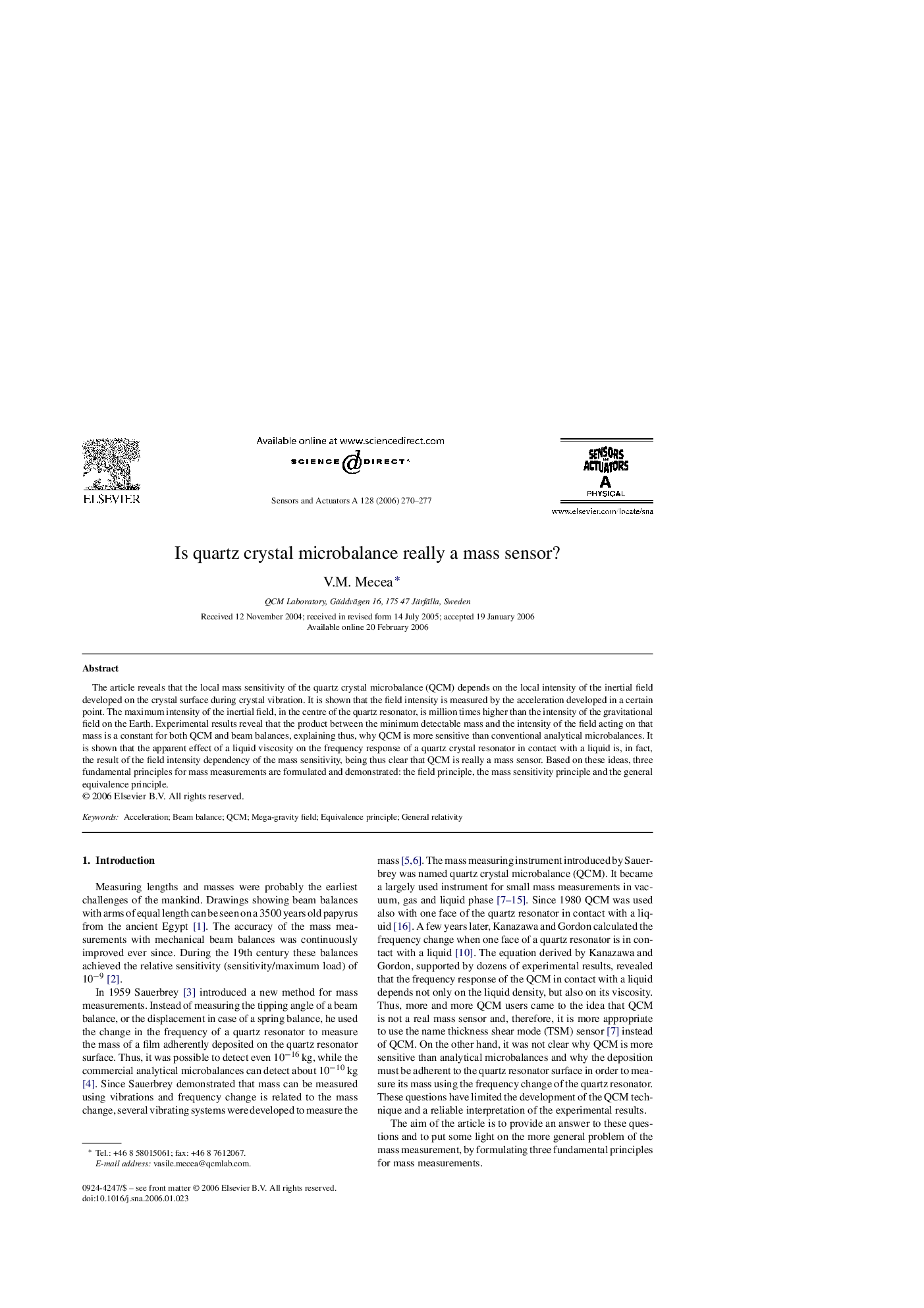| Article ID | Journal | Published Year | Pages | File Type |
|---|---|---|---|---|
| 739200 | Sensors and Actuators A: Physical | 2006 | 8 Pages |
The article reveals that the local mass sensitivity of the quartz crystal microbalance (QCM) depends on the local intensity of the inertial field developed on the crystal surface during crystal vibration. It is shown that the field intensity is measured by the acceleration developed in a certain point. The maximum intensity of the inertial field, in the centre of the quartz resonator, is million times higher than the intensity of the gravitational field on the Earth. Experimental results reveal that the product between the minimum detectable mass and the intensity of the field acting on that mass is a constant for both QCM and beam balances, explaining thus, why QCM is more sensitive than conventional analytical microbalances. It is shown that the apparent effect of a liquid viscosity on the frequency response of a quartz crystal resonator in contact with a liquid is, in fact, the result of the field intensity dependency of the mass sensitivity, being thus clear that QCM is really a mass sensor. Based on these ideas, three fundamental principles for mass measurements are formulated and demonstrated: the field principle, the mass sensitivity principle and the general equivalence principle.
